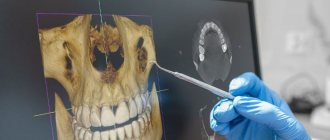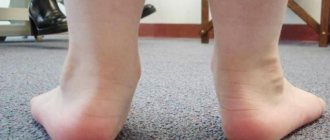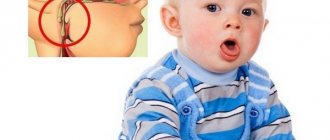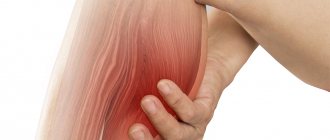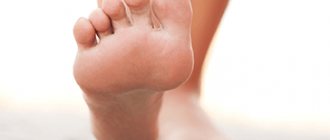Night shudders when falling asleep
Startling when falling asleep and during sleep is familiar to many. This occurs especially often when falling asleep. Considering the phases of sleep, this phenomenon occurs at the moment when a person feels asleep. With a sharp contraction of the muscles, he wakes up again. Not everyone likes it, but it is not a pathology, except in exceptional cases. If you experience convulsions with sudden, irregular jerking of the limbs or other pain or spasms, you should consult a doctor.
Description of symptoms
A sign of myoclonus is an involuntary startle at the moment of falling asleep or during sleep, which does not have a regular sequence. It does not cause physical pain, but it disturbs sleep. A person wakes up from the fact that his body in one part or another makes an involuntary jerk. Most often, the muscle contraction leading to this movement occurs in the extremities, usually the lower ones. Hands shake much less often.
Sometimes there may be trembling of the whole body. Especially rarely, the action occurs in the area of the tongue or soft palate.
The intensity of movements can vary, from a slight wince to a jerk. The latter can lead to hitting the wall (if the bed is not located in the middle of the room).
Myoclonus syndrome occurs in both adults and children. Even infants can react this way to a sound or color external influence (thunder, flash of light).
Explanation of the syndrome
Why a person shudders in his sleep is not an idle question. A large number of people face this phenomenon. Doctors identify several causes of the syndrome:
- heavy physical exertion on the shuddering muscle group;
- nervous stress that preceded falling asleep;
- emotional outburst;
- stopping taking sedatives or sleeping pills;
- decrease in oxygen content in the air.
In addition to benign myoclonus, there is a malignant variety. In this case, involuntary flinching may be caused by:
- cerebrovascular diseases;
- head or spine injuries;
- suffered micro-strokes;
- disorders of the kidneys or liver.
The type of myoclonus can only be determined by consulting a doctor. Trembling associated with serious illnesses is often accompanied by cramps and other painful sensations, which indicates the need to visit a specialist.
Reasons why an adult twitches when falling asleep
Most often, when falling asleep, people experiencing chronic fatigue or stress startle. It has long been known that sleep consists of several phases. The transition from one of them to another takes about 2 hours, and the immersion in sleep itself occurs gradually. That is why, after a day full of emotional and physical stress, when it seems to us that we fall asleep only by placing our head on the pillow, we have not yet completely switched to sleep mode. Being in the phase of superficial sleep, a person continues to react to all many external factors: sounds, light and others that become irritants. When you fall asleep, the body relaxes, but the brain continues to work. Losing control over the body, it begins to send a signal to the nervous system, which causes a sharp short-term muscle contraction. This phenomenon is called myoclonus in medicine.
Types of spasms and twitching
At the moment of falling asleep, the body relaxes, and the brain classifies this fact as dangerous. A sharp muscle twitching becomes a triggering mechanism, a reaction to danger. Excessive muscle tension can also lead to involuntary winces. Convulsions during sleep are of various types:
- synchronous and asynchronous;
- rhythmic and arrhythmic;
- spontaneous;
- reflex.
Experts classify involuntary muscle spasms as
- myoclonic jerks;
- hypnogogic convulsions;
- restless legs syndrome;
- sleep paralysis
Let's figure out what is unique about each type. Is the “shudder and wake up” state dangerous for the body?
Myoclonic jerks
Irregular twitching that does not have a constant location is characteristic of people suffering from epilepsy. It often occurs in older people and is associated
- with neuroses;
- decreased amount of oxygen in muscle tissues;
- age-related degenerative changes occurring in cells.
Muscle contractions can occur in individual parts of the body (legs or arms, facial muscle contractions are possible) or cover it completely. The location of seizures often changes. The danger of myoclonic twitches lies in their ability to progress.
Involuntary muscle contractions (myoclonus) can occur not only at rest, but also during movement.
Hypnogic seizures
This type of involuntary movement, when the legs move when falling asleep, is still being studied. Experts have not come to a definite conclusion about the cause of their occurrence. According to the results of recent studies, it was discovered that involuntary spasms occur when the cervical vertebrae relax at the moment of falling asleep. The nerve fibers leading to the muscles simultaneously become excited, and the person feels a sharp spasm, leading to awakening.
Restless legs syndrome
The phenomenon is typical for middle-aged and elderly people and has a precise location. Unlike previous varieties, the cause of the movements produced is an unpleasant sensation that occurs in the lower extremities: burning, pain. To relieve the feeling of discomfort, a person begins to make involuntary movements with his legs. The disease can progress, and as a result, movements begin to be made with the hands. The syndrome occurs either as a result of acquired health problems or at the genetic level.
Sleep paralysis
This disease phenomenon is distinguished by the fact that the body does not produce sudden shudders, but on the contrary, the person does not have the ability to make them. The brain realizes the need to perform certain movements when waking up, but the body refuses to obey the ongoing impulses. Sleep paralysis does not cause a sudden awakening. Attacks occur only upon normal awakening after sleeping on your back. Doctors believe that stress and an inactive lifestyle are prerequisites for the appearance of sudden numbness.
Did you know that in medieval Europe people were subjected to the Inquisition due to sleep paralysis?
Restoration of motor function will occur when the brain is fully involved in work and is aware of what is happening. At this stage, you can begin to slowly move your tongue, eyes, limbs, starting with your fingers. Having managed to raise your head, you can try more active movements.
Martial arts in the depths of the brain
The most common movement we make in our sleep is rapid eye twitching. When we dream, our eyes move according to what we are dreaming. For example, we see a tennis match in a dream, our eyes move, following it in flight. If you see that the sleeper's eyes are moving, this is the surest sign that he is dreaming.
- 315
More details - 171
More details
- 630
More details
- 171
More details
Hypnogogic seizures seem to be a sign that the motor portion of the nervous system retains some control over the body when sleep paralysis begins to take hold. Instead of one sleep-wake switch in the brain that controls our sleep, we have two opposing systems. They balance one against the other during the daily cycle.
Differential diagnosis
The cause of involuntary shuddering when falling asleep can only be determined by differential diagnosis. Modern equipment makes it possible to identify diseases with similar symptoms at an early stage. Only after a full examination, in some cases:
- CT or MRI;
- electroencephalography;
- radiography;
- Ultrasound of the vessels of the cervical spine and head;
- ECHO.
Treatment is prescribed individually.
Diagnostics
If you have twitching limbs, you need to come to your local physician. He will conduct an initial examination and prescribe tests and diagnostic procedures. MRI or CT, encephalography, Dopplerography, radiography, blood tests (general, biochemical, sugar) may be required.
If the doctor cannot make a diagnosis, he will refer the patient to a specialist: a neurologist, rheumatologist, endocrinologist, phlebologist. Only after determining the causes of the symptom can treatment begin.
Physiological factors of night twitching
The occurrence of attacks of nocturnal myoclonus, according to scientists, is influenced by various physiological factors.
- Sleep phases - during the transition from shallow to deep sleep, the brain receives a motor impulse, to which it reacts with a sharp start.
- Neurophysiology - twitching is caused by the incompatibility of a completely relaxed body and rapid eye movements. The brain gives an impulse that returns the body to activity. Further falling asleep occurs more calmly and evenly.
- Circulatory problems - lead to a decrease in the amount of oxygen in the blood and poor blood supply to the limbs and their numbness. The sharp impulse sent helps to wake up, restore activity and improve blood circulation.
- Physical fatigue after hard work or sports.
- Nervous stress to which a person has been exposed during the day does not allow the body to completely relax when going to sleep.
- Myoclonus associated with a sharp noise or a bright flash of light provokes fear, which ends with a shudder.
- Myoclonus caused by apnea (stopping breathing) - the brain turns on and provokes a wince.
Learn more about the stages of sleep, how much sleep you need to get enough sleep and other interesting facts about your sleep.
Leg twitching before sleep: what do scientists think about it?
Spontaneous twitching of the legs and arms when falling asleep is a common phenomenon. Scientists give him several explanations. The first is the release of the tension accumulated during the day. The muscles work actively and do not have time to recover and relax. The brain sends signals to them, provokes contractions and in this way eliminates hypertonicity.
The second explanation is a reaction to slow breathing and a decrease in heart rate. When falling asleep, a person begins to breathe deeper and slower, and the heart works less actively. The brain perceives changes as a threat to life and tries to awaken and “invigorate” the body with the help of spontaneous muscle contractions.
The third explanation is a response to deteriorating blood supply. At rest, blood moves more slowly through the vessels, which causes them to narrow. Receptors located in the walls transmit signals to the brain. The organ reacts and transmits impulses to the muscles. The limbs contract, the sleeping person involuntarily changes his position and prevents the legs and arms from becoming numb.
Pathological factors of myoclonus
In addition to natural physiological causes, shuddering can result from various diseases:
- epilepsy;
- hereditary degenerative problems in the brain stem and cerebellum;
- inflammatory processes in the brain caused by viruses;
- brain pathologies associated with human motor function;
- nervous and mental disorders;
- essential myoclonus (a disease of hereditary origin);
- restless legs syndrome;
- lack of microelements.
For tremors caused by the listed diseases, consultation with a doctor and individually selected treatment is necessary.
Types of myoclonus
The twitching has a scientific name - myoclonus. There are several varieties:
- Cortical myoclonus develops as a result of damage to the cerebral cortex caused by past infections (encephalitis, influenza) or the accumulation of certain substances in the body (such conditions include leukodystrophy, hemochromatosis, amyloidosis). Contractions and convulsions occur at lightning speed, reminiscent of electric shocks.
- Simmonds nocturnal myoclonus is common. Adults and children experience it; symptoms occur at night or late in the evening when falling asleep, but usually do not cause discomfort and do not force them to wake up.
- Hypnotic myoclonus develops in newborns and manifests itself in the form of flinching from any sounds. In older children, episodes occur in response to vivid dreams and nightmares, loud, sharp noises (claps of thunder, falling of heavy objects).
- Algomyoclonia is a response to severe pain syndrome that develops with inflammatory diseases of the joints or nerve endings.
Startles during sleep in children
Involuntary movements in children due to abnormal electrical activity of the brain. It gives signals to muscle tissue. This leads to sudden twitching of the baby. They usually go away with growing up, but sometimes seizures are triggered by diseases:
- meningitis;
- head injuries associated with brain damage;
- intoxications (during treatment);
- brain tumors.
An external stimulus (light or sound) can cause such a reaction.
To find out the reasons, you need to consult a doctor and examine the child. If pathology is detected, urgent treatment is required.
Twitching in children can be caused by high fever. It is easy to identify this reason yourself and take measures to eliminate it.
Symptoms and localization
The symptom can be experienced by children, adults and the elderly of both sexes. Twitching is often observed during pregnancy, which is caused by the influence of several factors: an increase in the need for nutrients, compression of the vena cava, which provides blood supply to the legs, strong feelings and an increase in the load placed on the lower extremities. In children, the symptom is caused by the rapid growth and development of all body systems.
Localization varies. Two legs can twitch chaotically or almost synchronously, and sometimes the arms are involved in the process. Often movements and muscle contractions occur in the left or right limb. The symptom can appear localized, affecting one muscle or group (the foot, thigh or calf will twitch), or generalized, spreading to different parts of the body.
The symptom can be observed in the evening when falling asleep, at night while at rest, or in the morning when waking up. It can cause you to wake up and occur several times a night in attacks lasting from a few minutes to an hour or longer.
Vein twitching signals the vascular disease described above. In this case, the area becomes noticeable, darkens, pulsates, and rises above the surface of the body.
If an arm or leg twitches several times, there is no reason to worry. Manifestations that are temporary and occur after exposure to provoking factors are not dangerous. If a symptom prevents you from falling asleep and interferes with sleep, is accompanied by other alarming signs and worsens the quality of sleep and life, you need to see a doctor.
Is treatment necessary?
To determine whether treatment for myoclonus is required, it is recommended to consult a doctor if signs of it appear (if the twitching is frequent and causes discomfort). They decide on the need for treatment. In most cases, the problem is solved by eliminating the causes of twitching:
- taking sedatives;
- weakening of physical activity;
- creating comfortable conditions for sleep.
Trembling, unless caused by serious pathologies, is not dangerous. It goes away after eliminating the causes that cause them. When a pathology is identified, it is necessary to treat the disease that is causing the seizures.
How to eliminate the symptom?
To effectively treat limb twitching, you must first find out the cause of the symptom. A doctor must make a diagnosis and prescribe therapy. Any medications are taken under the supervision of a specialist and are prescribed taking into account the health status and individual characteristics of the patient. But treatment may include other areas.
Sports, therapeutic exercises and other procedures
Physical activity will help get rid of twitching arms and legs. But intense exercise will aggravate the situation, so choose the optimal level and consult your doctor.
The training should begin with a warm-up necessary to prepare the muscles. The pace and loads increase gradually. After class, you may feel slightly tired, but not overworked or overexerted. Finish your workout with a slow stretch and cool down to help your muscle tissue recover faster. Massages, warm baths, and gentle muscle rubbing are effective.
Proper nutrition
If your legs and arms are twitching, reconsider your diet. Include foods rich in protein, amino acids, potassium, phosphorus, iron, magnesium, and calcium. This includes lean meat, red fish, dairy products, seafood, bananas, apricots, legumes, and greens.
Drink less strong coffee and tea, which have a stimulating effect on the nervous system.
To restore metabolism and water-salt balance, drink at least 1.5 liters of clean water per day.
Proper preparation for bed
Twitching of the legs, observed during sleep or before falling asleep, will disappear if you properly prepare for the night's rest. Follow simple rules:
- Relaxation. To forget about problems and fall asleep faster, it is recommended to listen to pleasant music and take a walk in the fresh air.
- Relieving tension. To do this, you can do warm foot baths, take a bath or shower before bed.
- Don't overeat before bed. Limit yourself to a light snack.
- At night, do not drink strong tea, coffee, hot chocolate, or cocoa. These drinks can make it difficult to fall asleep. It is better to make a herbal infusion with chamomile or linden, and drink a little warm milk.
- Do not overwork in the afternoon, avoid unpleasant and violent emotions.
- Ventilate the room.
It is not always necessary to treat nighttime limb twitching. Sometimes it is enough to change your lifestyle and diet. But if the symptom is due to a health problem, consult a doctor. Have a good night's sleep!
Treatment of restless legs syndrome in children
The list of diagnostic options in this situation is limited, so most studies are aimed at excluding other possible causes of seizures and insomnia. Shown:
- biochemical blood test with mandatory determination of the level of ferritin, transferrin, serum iron, glycated hemoglobin, glucose, vitamins;
- EEG, ultrasound and Dopplerography of cerebral vessels;
- a general blood test, the results of which pay attention to the erythrocyte sedimentation rate, leukemia formula and other possible signs of the inflammatory process;
- immunogram (if an autoimmune disease is suspected);
- electroneuromyography.
The specialists of our medical center begin treatment of RLS with non-drug methods. Recommended:
- Massage. You can do it yourself, but it is better to seek help from a specialized specialist.
- Water procedures: a warm bath shortly before bedtime, preferably with the addition of herbal decoctions that have a sedative effect.
- Normalization of the daily routine, nutrition correction. If the child already eats “adult” food, the diet must contain foods rich in iron and B vitamins (boiled meat, fish, eggs, many cereals, etc.).
- Minimizing the influence of stress factors. Perhaps it is necessary to reduce the child’s stay in the kindergarten, organize family leisure, joint recreation, but under no circumstances should overwork be allowed.
- Regular walks in the fresh air.
Drug treatment is “connected” if there is no effect from the above measures. They use sedatives and, according to strict indications, anticonvulsants, which are used in pediatrics for the treatment of childhood epilepsy.
You can get more detailed information, sign up for a consultation or call a specialist at home from our operators by phone .


